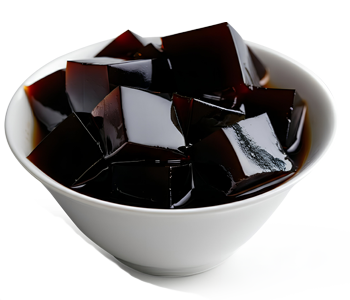✨ New on Amazon! ✨ Enjoy up to Special Discount for a limited time on Amazon! Click HERE ➚
✨ New on Amazon! ✨ Enjoy up to Special Discount for a limited time on Amazon! Click HERE ➚

Konjac (also known as konnyaku) jelly is a low-calorie, gelatin-like food made from the corm of the konjac plant, also known as Amorphophallus konjac. This plant is native to parts of Asia and is widely used in cooking and food production due to its unique gelling properties. Konjac jelly is widely appreciated for its wobbly & elastic texture, health benefits, and versatility.
Main Ingredient: Glucomannan
The jelly is primarily made from glucomannan, a water-soluble dietary fiber derived from konjac. When mixed with water, glucomannan expands and forms a gel-like substance.
Low in Calories
Konjac jelly is extremely low in calories, making it popular among individuals seeking weight management solutions or healthier dessert alternatives.
Rich in Fiber
Due to its high glucomannan content, konjac jelly is a great source of dietary fiber, which can aid digestion and promote a feeling of fullness.
Health Benefits
Variety of Flavors and Uses
Konjac jelly is available in a wide range of flavors, from fruity to savory, and can be eaten as a snack, dessert, or even added to drinks. It is also used in recipes for noodles (like shirataki noodles) and other food products.
Vegan and Gluten-Free
As it is plant-based, konjac jelly is suitable for vegan diets and is naturally gluten-free.
1. Shirataki Noodles (Konjac Noodles)
2. Konjac Jelly
3. Konjac Blocks
4. Konjac Rice
5. Konjac as a Thickener or Stabilizer
contact [at] heysweet.co
288 East Live Oak Ave #181, Arcadia CA 91006
Sign up here to get the latest news, updates and special offers delivered to your inbox.